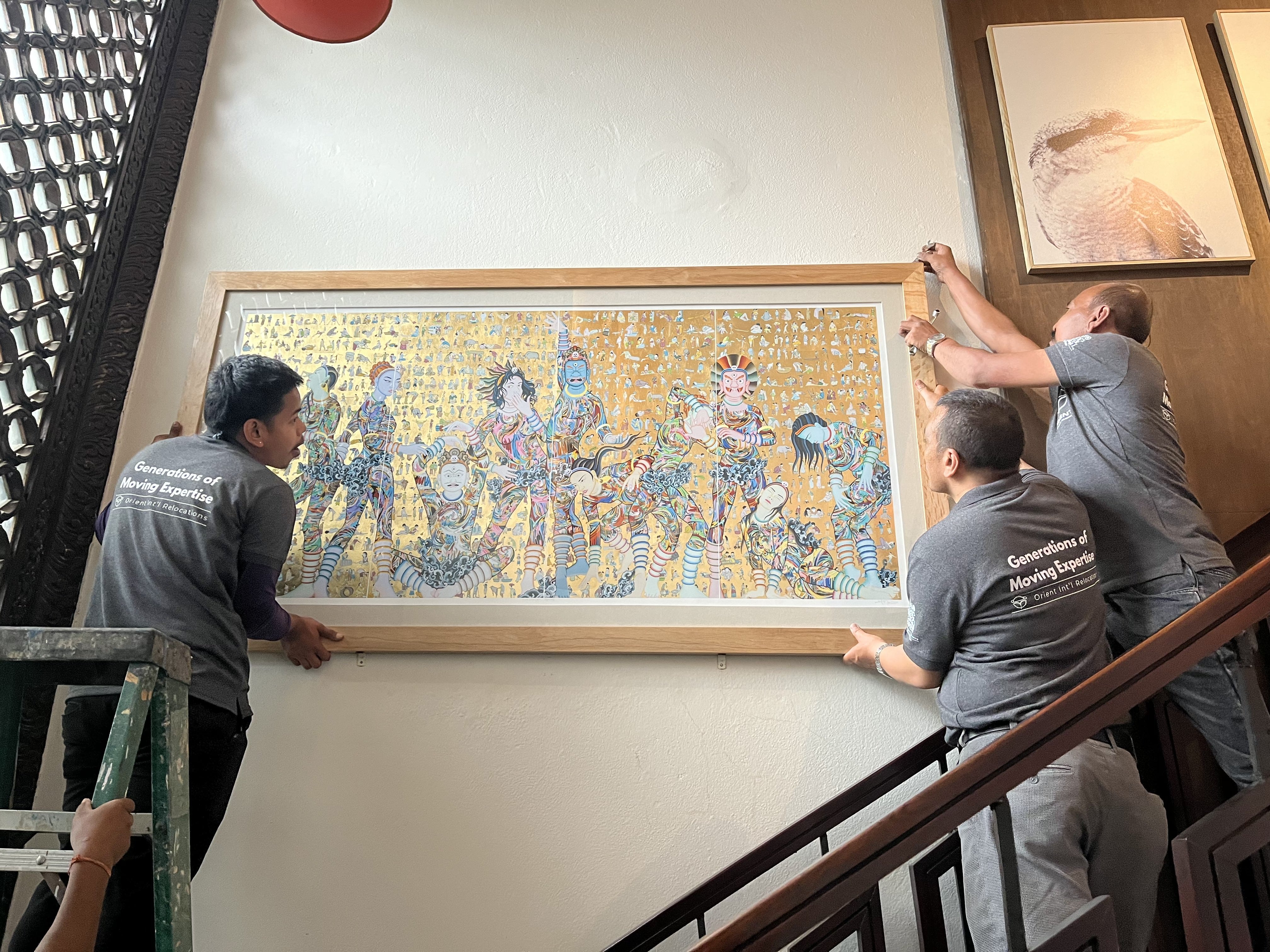For many art enthusiasts, moving abroad doesn't just mean relocating belongings—it means carefully transporting a part of your personal identity. Whether you’ve collected Thangka paintings in Boudha, stone carvings in Patan, or contemporary works from Kathmandu galleries, your personal art collection deserves thoughtful planning during international relocation.
This guide simplifies everything you need to know about moving personal art collections from Nepal, whether you’re a long-time expat, diplomat, artist, or collector.
Who This Guide Is For
-
Expatriates and diplomats relocating from Nepal
-
Travelers or collectors who’ve acquired artwork during their stay
-
Artists exporting their own work
-
NGOs and institutions moving art for cultural exhibitions
What Counts as Personal Art?
Personal art collections include:
-
Paintings (Thangka, oil, acrylic)
-
Sculptures (wood, stone, brass)
-
Prints and photographs
-
Mixed media art
-
Ceramics or delicate installations
Whether you're shipping one canvas or a diverse collection, each item needs proper handling to preserve its value and integrity.
Step 1: Inventory Your Art Collection
Before contacting a mover:
-
List each piece with dimensions, medium, and artist (if known)
-
Take clear photographs from multiple angles
-
Note any existing damage
-
Assign an approximate value for insurance purposes
This record becomes crucial during packing, customs clearance, and insurance claims (if needed).
Step 2: Understand Export Laws in Nepal
Do You Need Permission to Export Art?
Most contemporary pieces or artwork purchased from galleries can be exported with:
-
A bill of sale or proof of purchase
-
Artist’s certification (optional but useful)
However, for antique or culturally significant artwork, you may need:
-
Clearance from the Department of Archaeology
-
Evaluation to prove it’s not a protected artifact (typically over 100 years old)
Customs Documentation
You will need:
-
Export declaration form
-
Art inventory
-
Passport copy and visa/ID details
-
Proof of ownership or purchase
-
Any clearance certificates (if applicable)
Tip: Work with a relocation service like Orient International Relocation who can guide you through legal compliance and document processing.
Step 3: Packing and Crating for Protection
Unlike everyday household items, personal art demands precision in handling.
Professional Packing Includes:
-
Acid-free paper to protect delicate surfaces
-
Glassine wrap for oil and acrylic paintings
-
Custom-sized crates with foam interiors
-
Shock-absorbing corner protectors
-
Climate-stabilized packaging for sensitive materials (like wood or canvas)
If you’re moving mixed media or installations, consider custom-built crates with internal support to maintain structure during transit.
Step 4: Choose the Right Mode of Transport
Air Freight
- Best for high-value or time-sensitive pieces
- More expensive, but faster
Sea Freight
- Cost-effective for large or multiple items
- Slower and needs advanced climate protection
Orient offers both options with climate-controlled transportation, route optimization, and loading supervision to ensure security from door to door.
Step 5: Don’t Skip Insurance
Even with expert care, transit risks exist.
Recommended Art Insurance Options:
-
All-risk coverage for damage, loss, or theft
-
Based on the declared value of each item
-
Door-to-door protection from Nepal to the destination
Orient’s relocation packages offer optional art insurance coverage, so you’re protected at every stage.
Step 6: Track, Communicate & Receive
Top-tier movers will:
-
Provide real-time shipment tracking
-
Communicate about customs updates
-
Ensure safe delivery to your new home, gallery, or storage unit
You can also choose to temporarily store the artwork in a climate-controlled storage unit in Nepal until ready to ship.
Why Choose Orient for Personal Art Moves?
Orient International Relocation offers tailored services for private collectors:
Services Include:
-
✔️ Expert art handlers with museum-grade training
-
✔️ On-site packing & condition reporting
-
✔️ Custom crating
-
✔️ Climate-controlled transportation
-
✔️ Global coordination & customs guidance
-
✔️ Fine art insurance solutions
They also offer assistance in moving antiques, shipping artwork to Kathmandu, and climate-controlled art transport Nepal—perfect if you're collecting while staying in Nepal.
Real Life Scenario: A Collector’s Experience
Emily, an American diplomat, spent 3 years in Nepal and collected over 15 art pieces—Thangkas, sculptures, and canvas paintings. She worked with Orient to:
-
Inspect and document each piece
-
Build custom crates suited to size and weight
-
Obtain clearance from customs for a wooden statue
-
Insure her collection for full replacement value
The entire shipment arrived safely in Washington, D.C., ready to be displayed in her new home.
Common Mistakes to Avoid
|
Mistake |
How to Avoid |
|
Packing artwork yourself |
Use professional art packing and crating |
|
Not declaring full value |
Declare actual worth to ensure complete insurance coverage |
|
Ignoring export documentation |
Always check if you need clearance, especially for older pieces |
|
Choosing cheap couriers |
Prioritize specialized movers for fine art handling |
Helpful Links and Resources
For enhanced navigation and SEO, this blog can internally link to:
Final Thoughts
Your personal art collection reflects your journey, memories, and aesthetic. Don’t leave its safety to chance during international relocation. With proper planning, documentation, expert handling, and reliable movers like Orient International Relocation, your art can arrive at your next home just as beautiful as it left Nepal.

